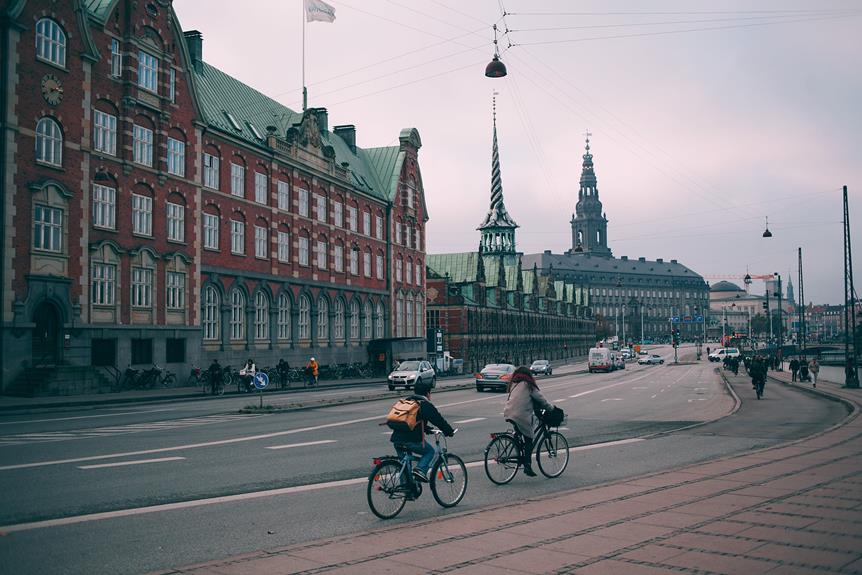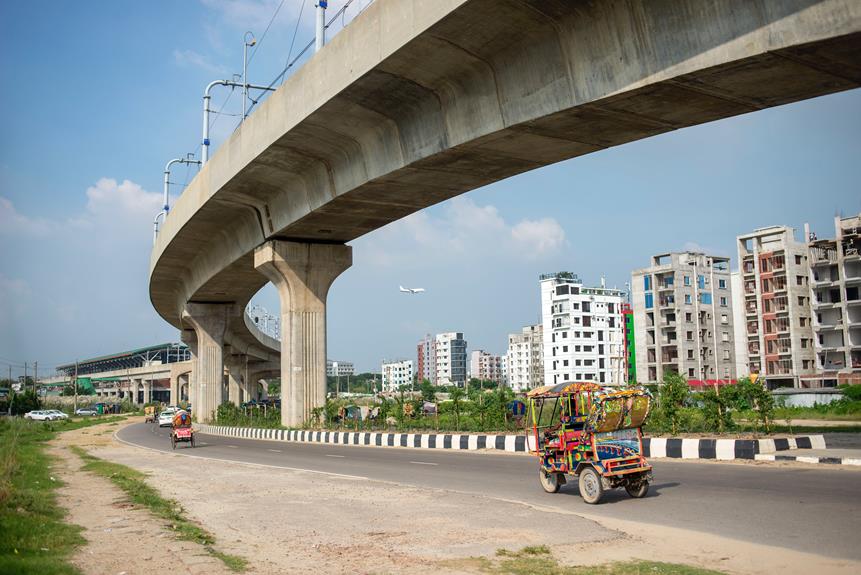Nestled in the heart of Bangladesh, Pirojpur District silently beckons travelers with its unassuming natural beauty and untapped potential. A haven of tranquility amidst the bustling cities, this district offers a tapestry of landscapes that will leave visitors awe-inspired. From the fertile low-lying lands that bear witness to the region's agricultural prowess to the meandering rivers that paint a picturesque backdrop, Pirojpur's charm lies in its ability to captivate without fanfare. But there is much more to uncover beyond its scenic allure. As we delve into the depths of this hidden gem, we will unravel the cultural heritage, economic vitality, and governance that make Pirojpur a destination worthy of exploration.
Geographical Features
Pirojpur District is characterized by its diverse geographical features, including rivers, low-lying fertile land, small forests, and a stunning natural beauty that makes it a hidden gem in Bangladesh. The landscapes of Pirojpur are a sight to behold, with picturesque views of rivers flowing through the district, creating a mesmerizing backdrop. The district is home to a rich biodiversity, with its fertile land supporting a variety of flora and fauna. The small forests in Pirojpur add to its natural beauty, providing a habitat for numerous species of plants and animals. From the lush greenery to the flowing rivers, Pirojpur District offers a breathtaking experience for nature lovers. Its landscapes and biodiversity make it a must-visit destination for those seeking tranquility and a deep connection with nature.
Demographics and Population
With its diverse geographical features and mesmerizing natural beauty, Pirojpur District attracts not only nature lovers but also a vibrant and dynamic population that contributes to the district's unique demographics. According to the 2022 Census, Pirojpur District has a population of 1,198,193, with a population density of 940 people per square kilometer. The district has a high literacy rate of 85.4%, surpassing the national average of 74.7%. The population growth rate in Pirojpur is also higher than the national average, reflecting the district's appeal and opportunities for growth. Muslims make up the majority of the population at 77.17%, while Hindus account for 22.79%. Pirojpur District is home to 3,087 mosques and 1,051 temples, showcasing the religious diversity within the district.
Economic Activities
Agriculture serves as the backbone of Pirojpur District's economy, driving its growth and providing sustenance for the local population. The district is known for its agricultural development, with a focus on the production of rice, jute, and vegetables. In addition to agriculture, the fishing industry also plays a significant role in the economic activities of Pirojpur. Many people in the district are engaged in fishing, taking advantage of the rivers and water bodies that surround the area. Pirojpur also has a small industrial sector, including textile mills and rice mills, contributing to the economic prosperity of the district. Overall, the district's economy is diverse, with a strong emphasis on agriculture and the fishing industry, which are vital for the livelihoods of the local population.
Infrastructure and Services
As Pirojpur District continues to thrive economically through its agricultural and fishing industries, it is equally important to highlight the essential role that infrastructure and services play in supporting the district's growth and development. Pirojpur has a well-developed road network that connects it to other parts of the country, providing easy access for both residents and businesses. Additionally, the district has a few railway stations, offering public transportation options for commuting and trade. In terms of healthcare facilities, Pirojpur has a few hospitals and clinics to cater to the medical needs of the population. However, there is room for improvement in expanding and upgrading these facilities to meet the growing demands of the district. Overall, the availability of public transportation and healthcare services are crucial for enhancing the quality of life and sustaining the economic progress of Pirojpur District.
| Infrastructure | Services |
|---|---|
| Well-developed road network | Public transportation options |
| Railway stations | Healthcare facilities |
Cultural Heritage and Tourism
Pirojpur District boasts a rich cultural heritage and offers a vibrant tourism experience, captivating visitors with its captivating traditional music, dance forms, and historical landmarks. The district is known for its lively folk festivals, where locals showcase their traditional music and dance performances. These festivals provide a glimpse into the vibrant cultural traditions of the region. Additionally, Pirojpur is home to several historical sites that attract tourists. Visitors can explore ancient temples, mosques, and architectural wonders that reflect the district's rich history. The district also offers opportunities for ecotourism, with its natural beauty and wildlife. From exploring the lush greenery to observing local flora and fauna, Pirojpur provides a unique and immersive experience for nature enthusiasts.
Governance and Administration
The governance and administration of Pirojpur District is characterized by a well-structured local government system and elected representatives who oversee the development and management of the district. Pirojpur is divided into several administrative units called upazilas, each governed by an elected chairman and council. This local government structure ensures that the needs and concerns of the community are addressed effectively. The elected representatives play a crucial role in decision-making, resource allocation, and implementation of development projects. They work closely with the Deputy Commissioner, who is responsible for the overall administration of the district. Pirojpur's local government system is designed to promote grassroots development and ensure the welfare of its residents. The active involvement of elected representatives in governance and administration contributes to the efficient management and progress of Pirojpur District.
Frequently Asked Questions
What Are the Major Tourist Attractions in Pirojpur District?
Pirojpur District offers a plethora of major tourist attractions, making it a hidden gem of natural beauty. From its lush green landscapes and picturesque rivers to its rich cultural heritage and historical sites, Pirojpur has something for every traveler. Explore the untouched beauty of Pirojpur by visiting the Sundarbans, a UNESCO World Heritage Site, or immerse yourself in the local culture by experiencing traditional music and dance forms. With its natural beauty and wildlife, Pirojpur is a haven for ecotourism enthusiasts.
How Many Schools and Colleges Are There in Pirojpur?
There are several top schools and colleges in Pirojpur district, contributing to the educational landscape of the region. However, it is important to acknowledge the challenges faced by educational institutions in Pirojpur. Limited resources, inadequate infrastructure, and a lack of qualified teachers are some of the obstacles that schools and colleges in the district encounter. Despite these challenges, efforts are being made to improve the educational system and provide quality education to the students of Pirojpur.
What Is the Main Source of Income for the People of Pirojpur?
The main source of income for the people of Pirojpur is agriculture and fishing. Pirojpur is known for its fertile land and agricultural activities, with rice, jute, and vegetables being the major crops grown. Fishing is also a significant industry in the district, providing employment and livelihoods to many residents. These economic activities contribute to the overall development and prosperity of the people in Pirojpur.
How Many Hospitals and Clinics Are There in the District?
There are several hospitals and clinics in Pirojpur District, providing medical services to the population. The exact number of healthcare facilities in the district is not mentioned in the provided information. However, it can be assumed that Pirojpur, being a district with a population of approximately 1.2 million people, would have a sufficient number of hospitals and clinics to cater to the healthcare needs of its residents. These healthcare facilities play a crucial role in ensuring the well-being and health of the people in the district.
How Many Upazilas Are There in Pirojpur District and What Are Their Names?
Pirojpur District is comprised of nine upazilas, or administrative units. These include Pirojpur Sadar, Bhandaria, Kaukhali, Mathbaria, Nazirpur, Nesarabad, Indurkani, Mothbaria, and Zianagar. With a population density of 940 people per square kilometer, the district is home to approximately 1.2 million people. Pirojpur is not only known for its vibrant demographics, but also for its rich historical significance and cultural heritage sites, making it a truly remarkable destination for tourists seeking to explore Bangladesh's hidden gems.





